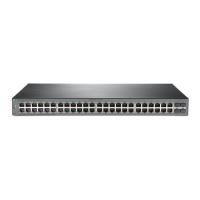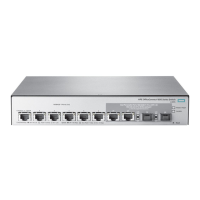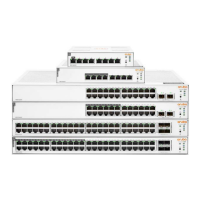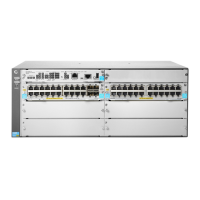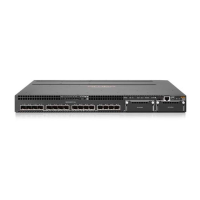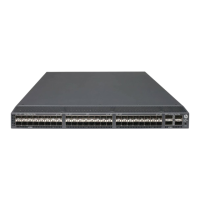128
Direct portal authentication configuration example
Network requirements
As shown in Figure 45, the host is directly connected to the switch (the access device). The host is
assigned a public IP address either manually or through DHCP. A portal server acts as both a portal
authentication server and a portal Web server. A RADIUS server acts as the
authentication/accounting server.
Configure direct portal authentication, so the host can access only the portal server before passing
the authentication and access other network resources after passing the authentication.
Figure 45 Network diagram
Configuration procedure
1. Configure the portal server. (Details not shown.)
2. Configure a RADIUS scheme on the switch:
a. From the navigation tree, select Security > Authentication > RADIUS.
b. Add RADIUS scheme rs1.
c. Configure the primary authentication server:
− Set the IP address to 192.168.0.112.
− Set the authentication port number to 1812.
− Set the shared key to radius.
− Set the server state to Active.
d. Configure the primary accounting server:
− Set the IP address to 192.168.0.112.
− Set the accounting port number to 1813.
− Set the shared key to radius.
− Set the server state to Active.
e. Configure the switch to not include domain names in the usernames sent to the RADIUS
server.
f. Click the Advanced settings icon on the RADIUS page.
g. Enable the session-control feature.
3. Configure an ISP domain on the switch:
a. From the navigation tree, select Security > Authentication > ISP Domains.
b. Add ISP domain dm1, and set the domain state to Active.
c. Set the access service to Portal.
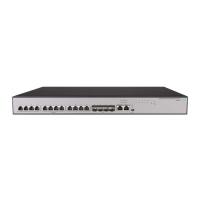
